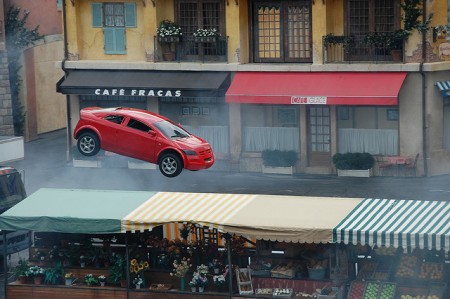Somewhere in your writer’s head is a Master Plot, an idea of what a story or novel should be like, how it should progress. For writers who don’t outline–the write-by-the-seat-of-their-pants writers–the Master Plot is hard-wired into their brains.
For the rest of us, the idea of a Master Plot is helpful.
Hero’s Journey. The hero’s journey can be used for anything from Star Wars to the middle grade classic, Bridge to Terabithia.
Christopher Vogler’s explanation of the Hero’s Journey is excellent. The basic stages, along with the corresponding character arc are these:
- Ordinary World – Limited awareness of problem
- Call to Adventure – increased awareness
- Refusal of Call – reluctance to change
- Meeting the Mentor – overcoming reluctance
- Crossing the First Threshold – committing to change
- Tests, Allies, Enemies – experimenting with 1st change
- Approach to the Inmost Cave- preparing for big change
- Supreme Ordeal – attempting big change
- Reward – consequences of the attempt
- The Road Back – rededication to change
- Resurrection – final attempt at big change
- Return with Elixir – final mastery of the problem
You write comedy or humor and want a plot for a novel?
John Vorhaus, in The Comic Toolbox adapts the hero’s journey into a Comic Throughline.
Similar to the Hero’s Journey is Peter Dunne’s adaptation to a story in which two main characters influence each other, or one character drastically changes a second. The Emotional Structure details how the characters interact. This could be a sort of Rivalry story, a Love story, a Forbidden Love story, or even one of Pursuit, Rescue, or Escape. The main thing here is that two characters act upon each other. Dunne suggests that Acts 1 and 3 are about the outer plot, while Act 2 is the inner journey.
There are other “master plot” ideas, but in discussing the idea of master plots, I like one strategy that Jack M Bickham discusses in his book, SCENE AND STRUCTURE. His “scenic master plot” includes a three-chapter self-contained subplot in the middle of the story, something exciting like a chase scene.
“Chapter Seven. Hero viewpoint. He is embroiled in his three-chapter quest. . . an action sequence, preferably physical: a car chase, a face-to-face confrontation with violent words and emotions, perhaps even an attack on the hero’s life. . .The end of the chapter is at a new disaster which will allow no time for sequel [evaluating what just happened], or at some turning point in the middle of the ongoing scene. This chapter hooks instantly into the next.”
I’ve always thought this was brilliant. Right when the novel is in danger of lapsing into a sagging middle, you insert a subplot of action that resolves over three chapters, while keeping the reader engaged. Of course, it must feed back into the main story after those three chapters and be integral to the story. But it solves so many pacing problems.
Do you have a sort of “Master Plot” that you write by?
Great insight. Jack Bickham’s book(s) have transformed my writing and provided more “A-ha” moments than I can highlight on his pages!